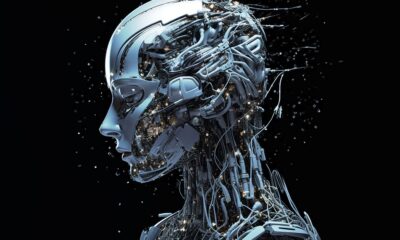TECHNOLOGY
How Blockchain & Artificial Intelligence Optimize the Functioning of Swarm Robots
How Blockchain & Artificial Intelligence Optimize the Functioning of Swarm Robots
Artificial intelligence (AI) and blockchain provide endless possibilities.
Combing blockchain and artificial intelligence has enhanced the efficiencies of swarm robots through the installation of smart protocols to navigate past traditional challenges.
Swarm robots in today’s world have revolutionized different applications, be it in health, manufacturing, tourism, education, and different other fields. Their versatile characteristics make these robots an ideal choice for applications of the future. Robots have solved several traditional problems but are hindered by various issues like data security, unnamed navigation problems and communication between the swarm robots. To solve all these problems, blockchain and AI have been employed to make the operations more secure, flexible and even more profitable to run. The emerging technology helps in combining different algorithms and solving a majority of these issues.
No Requirement of Human Guidance
Swarm robots are becoming increasingly popular and are providing a cost-effective solution for day-to-day human requirements. A majority of robotic activities require some form of human supervision to function at their peak. But blockchain and AI form a strong cognizance and create a set of algorithms that devise complete autonomy to the robots. Blockchain stores massive blocks of data that guide robotic swarms to interpret data and use it across different applications. The nodes in the blockchain network keep track of the internal channels and execute their computations through mechanical and electronic functions.

Consensus Protocol
Consensus has been a major problem prevailing amongst swarm robots. The problem can be divided into discrete or continuous problems. Discrete problems are formalized and require the swarm to agree to a set of finite choices. In continuous problems, the robots have to agree upon infinite choices creating an estimation problem. To achieve or predict an exact number in this protocol is not possible. With blockchain and AI technology, the sample size of the data can be shrunk to get an approximate consensus. Here the robots calculate an average based on its estimate and project it to its neighboring prodigies.
Advanced Security
An automated blockchain system naturally raises the risk of security and safety of the data against deception. Blockchains today store up to 250 GB of important information in their centralized storage. A secure data source can allow the swarm of robots to work efficiently across multiple channels. To ensure a consensus-protected algorithm, advanced encryption techniques have been used to safeguard these systems. The most common encryption techniques are digital cryptographic signatures and secure public key cryptography that forms the structure of a blockchain operation. These smart algorithms ensure that data is shared securely across the robotic channels. The highly secured data is assigned with public and private keys to one robot in the swarm. The public key projects foremost information available, while the private key identifies robots or personnel before initiating a communication line.
Conclusion
Finding the best way to accomplish different tasks using a swarm of robots has been the biggest challenge in the market.

Blockchain and AI with smart contracts, versatile algorithms, game theory, and economic mechanisms provide the best solution to assign work to robotic swarms. The rapid improvement and development of blockchain technology will slowly develop the efficiency and functionality of swarm robots across different applications.
Source link



















You must be logged in to post a comment Login